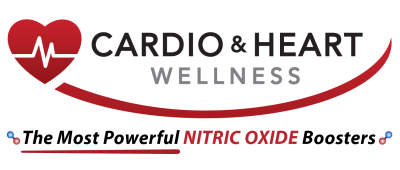Nitric Oxide Plus for Heart Health
Why the 3rd Generation Nitric Oxide Plus is Superior to All Other Formulas on the Market
The Nitric Oxide Machinery in Our Blood Vessels Becomes Worn Out with Advancing Age
Our blood vessel system is a fabulous system of tubes transporting blood from the heart into the organs and tissues (via the arteries), and back from there to the lung and the heart (via the veins). The heart muscle functions like a pump, keeping blood flow alive 24 hours a day, 7 days a week, and the lungs serve to refresh the oxygen content of the blood. With 70 heart beats per minute, it delivers 100,800 beats per day or 36.8 million beats per year. When we sleep, the heart does not rest, when we exercise or get angry, the heart is pushed to maximal power by all the adrenaline in our system.
At the age of 55, our heart has performed more than 2 billion heart beats without ever stopping. In order to adjust blood flow to all the various situations that we encounter in our lives, the arteries are not stiff (like water tubes made of copper or steel are stiff) no, the arteries are flexible and adjust their inner diameter according to the need of blood flow for the respective organ or tissue that they bring the blood to. This is one of the biggest wonders of cardiovascular biology! For example, when we exercise on a bicycle, our leg muscles need lots of oxygen and nutrients to perform the exercise. This is brought to the leg muscles through the blood stream. The arteries in the legs sense the higher need for oxygen and nutrients, and they increase their inner diameter, so that even more blood can flow to the muscles!
How does this happen? In the arteries, the inner cell lining (which is called the “endothelium”) produces a tiny molecule, nitric oxide (NO). When endothelial cells sense the need for more oxygen and nutrients, they release NO, which relaxes the smooth muscle layer sitting around the artery, and the artery dilates (i.e., the inner diameter becomes wider and more blood can flow through).
At the time when we are born, the “NO machinery” works perfectly well, comparable to a brand new sports car. Over time, as we grow older, however, this machinery ages, too. It becomes worn out, it slows down its maximum performance, in some peoples it starts to “stutter”. Why does this happen? Compare your body with the sports car that you once bought, 55 years ago. Does the sports car still run at the same pace, like when it was brand new? No, it doesn’t. The engine is old, there is rust and tiny defects all over which reduce its performance. The same is true for our body: There may be high blood pressure, you may have smoked for years, your cholesterol may be higher than your doctor wants it to be. Each observation may not be severe taken by itself, but together they add up to cause some severe malfunction of your cardiovascular system – even if you cannot feel any symptoms of it, yet.
The Way the NO Machinery Functions or Why It Does Not?
Nitric oxide is produced in the endothelial cells of our arteries from the amino acid L-arginine. Being an amino acid, L-arginine is a building block of proteins, and with the proteins that we eat, we consume about 5 – 6 g of L-arginine each day. An enzyme named nitric oxide synthase in the endothelial cells takes up L-arginine and converts it into Nitric Oxide (NO). NO then moves to the muscle cells surrounding the arteries and causes them to relax – the artery widens. On its way from the endothelial cell to the muscle cell, NO can be attacked by superoxide radicals. Superoxide radicals are toxic oxygen radicals that are formed when inflammation is present; these oxygen radicals react with NO and inactivate it.
There are multiple mechanisms by which the biological functions of NO may be diminished: First, we need to have enough enzyme Nitric Oxide synthase in our endothelial cells. The Nitric Oxide synthase is like the engine of your sports car when there is not enough enzyme within the cells, the system cannot work like a brand-new Porsche car, but rather like let’s say an old Tin Lizzy.
Second, this NO engine needs to have enough of the right fuel racing car fuel, not gasoline to go full power. For the Nitric Oxide synthase, L-arginine is the fuel from which it forms NO. Many people develop a deficiency in L-arginine during the course of their life. This may be due to malnutrition (fast food, high fat, high carbohydrates ), and high levels of ADMA, an inhibitor of NO synthase, may also cause relative L-arginine deficiency. Many people with cardiovascular risk factors like high blood pressure, high blood cholesterol, diabetes, and other conditions are known to have high ADMA levels.
Third, and last, reactive oxygen species are produced when the vascular wall is not healthy. Oxygen radicals react with Nitric Oxide, leading to a loss of function of Nitric Oxide and to the production of peroxynitrite, a toxic reagent that destroys tissues and cells this situation is known (and dreaded) as “nitrosative stress”.
The Benefits and Limitations of L-Arginine Supplementation
A vast number of experimental studies suggest that supplementation with L-arginine improves vascular function and protects from high blood pressure, atherosclerosis, and vascular disease in animals. In all of these studies, however, the experimental animals received L-arginine in their drinking water at their continuous disposition. It has been known for 20 years that in humans, L- arginine has a very short duration of action; L-arginine remains in the blood for only about one hour (this is called the “half-life”). With such a short half-life, L-arginine needs to be ingested every 2 3 hours in order to keep its blood levels high throughout the day impossible to do for anybody in the long run.
Despite this knowledge, many clinical studies in human subjects have used L-arginine as is for twice daily administration. No wonder that the results were very variable and controversial. For example, in one large, NIH-funded study, patients who had experienced an acute myocardial infarction were treated with L-arginine or placebo. The study was stopped when no benefit was observed but a higher mortality in the L-arginine group. In the publication of their results, the authors had to admit that L-arginine blood levels were lower in the L-arginine-treated group than in the placebo group. No wonder, an expert would say, because twice daily administration means 12 hours in between doses; during this time L-arginine blood levels will fall back to baseline for at least two thirds of the time. In another study, L-arginine did not improve walking distance in patients with an arterial occlusion in the leg artery. Again, the authors of the study reported twice daily administration of pure L-arginine, and they showed that most of the L-arginine was converted by arginase, not by NO synthase. Many other studies have found that L-arginine does improve exercise tolerance, reduces blood pressure, and normalizes “endothelial function”. In 2011, a meta-analysis (this is a kind of statistical analysis that extracts the data from multiple published studies to generate a reliable view on the efficacy of a medical treatment) clearly showed that L-arginine supplementation reduces systolic blood pressure. The upper blood pressure value and diastolic blood pressure (the lower value) by about as much as low-to-medium doses of registered, pharmaceutical blood pressure lowering drugs do.
Several groups of researchers have reported in the recent years that L-citrulline which is another amino acid that is naturally present in our food is readily absorbed in our intestines and is thereafter converted into L-arginine. This process takes some time, so that it is no wonder to see that L-arginine blood levels remain elevated for longer time after an oral dose of L-citrulline than after an oral dose of L-arginine. As too much of L-citrulline is no good either, the combination of an optimized ratio of L-arginine to L-citrulline in the dietary supplement was found to be ideal for keeping L- arginine blood levels up long enough to allow for twice daily ingestion of the supplement.
However, when studying the market of dietary L-arginine supplements, the vast majority of products still contain just L-arginine no matter whether this works or not. Just very few products contain the combination of L-arginine to L-citrulline, and even fewer contain the optimal ratio of 3 : 1. It is important that people learn that this is a crucial point for spending their money for a product that works, rather than for a product that helps no one than the manufacturer.
The Outstanding Benefits of the 3rd Generation Formula Nitric Oxide Plus
Even the combination of L-arginine plus L-citrulline can improve just one out of three pathological conditions in the NO machinery (see above): It is the right fuel for the enzyme, the racing fuel.
The two other defects remain unchanged with L-arginine plus L-citrulline. However, the 3rd generation formula of Nitric Oxide Plus has been formulated based on scientific data to tackle all three problems:
Nitric Oxide Plus contains a proprietary blend of herbal extracts that have been shown scientifically to increase the levels of the NO synthase enzyme. Using the image of the sports car, this is like exchanging the Tin Lizzy’s old engine with a new Porsche engine. Only now can the racing- fuel the L- arginine plus L-citrulline deliver its full potential.
Nevertheless, the Nitric Oxide Plus formula can do more: The proprietary blend of herbal extracts was designed to diminish toxic oxygen radials, and scientific data have shown that it does so.
Nitric Oxide Plus puts the cells into a position to fight against toxic oxygen radicals coming from the outside, e.g. from inflammatory cells. The formula also blocks the de novo formation of oxygen radicals in the endothelial cells, and by this means hit has a dual action against oxidative stress from inside and from outside of the cell.
And finally, Nitric Oxide Plus contains high quality L-arginine plus L-citrulline in the optimal dose ratio of 3 : 1. Thus, this supplement is the only one on the market worldwide which addresses all three problems that may lead to nitric oxide deficiency it is the Porsche amongst the L-arginine supplements!
Rainer Boger MD, Researcher and Professor of medicine
University of Hamburg, Germany
28 years of research on cardiovascular disease and arginine
Also the science and studies of major Universities


